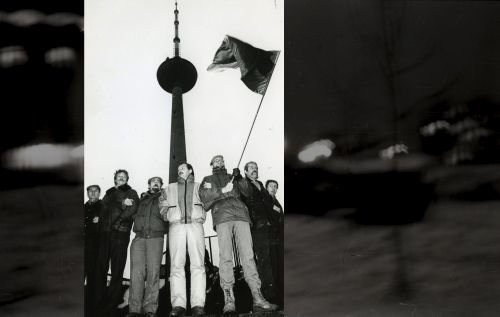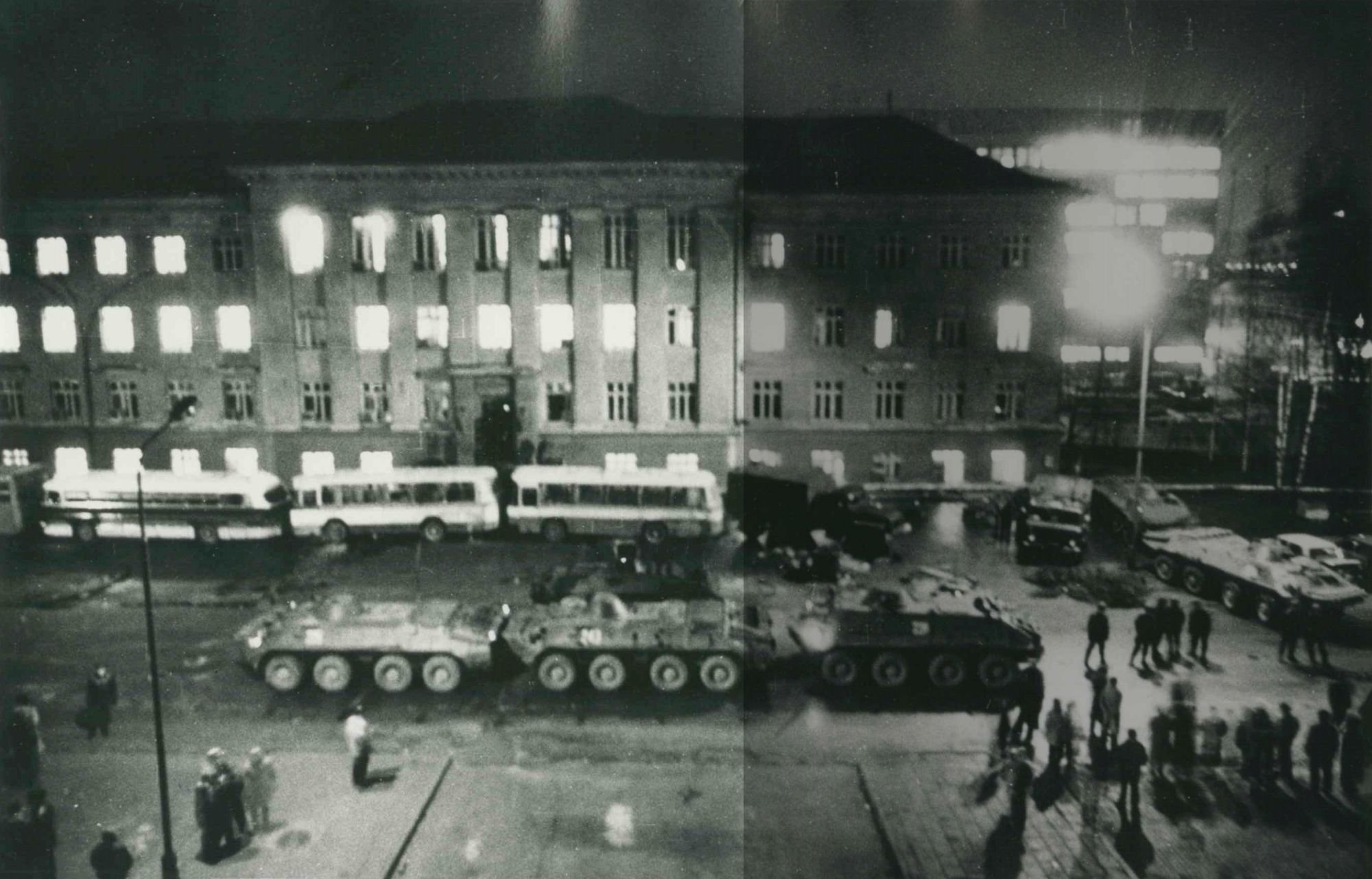January 1991
in the testimonies of the defenders of Lithuania‘s independence

The Genocide and Resistance Research Centre of Lithuania
Please use arrow keys for navigation
On 15 June, 1940, the Lithuanian state was occupied by the Soviet Union. The first Soviet occupation began, marked by arrests, killings, deportations, imprisonment in prisons or hard labour camps. Since 1941 until 1944 Nazi occupation, since 1944 until 1990 the second Soviet occupation demanded lives of tens of thousands of Lithuanian citizens. Hundreds of thousands have been deported, imprisoned or forced to flee their country. However, the lost independence and freedom of the state was not disclaimed. Throughout the period of Soviet occupation, there was a purposeful anti-Soviet resistance of the Lithuanian population to the occupying power. The hope that occupied Lithuania could be a free and democratic state was never lost. This hope became real in 1990s, when Soviet leader Mikhail Gorbachev undertook reforms and liberated the chains of the occupation regime. Taking advantage of favorable political circumstances, a social movement began to form in Lithuania - the Lithuanian Restructuring Movement (since 1990 – Lithuanian Movement), which eventually gained great support from the Lithuanian nation, attracting hundreds of thousands of people to rallies organized throughout the country. The Baltic Way was organized at the initiative of the Lithuanian Restructuring Movement. An unbroken chain of 650 kilometers of people showed the world that Lithuania, Latvia and Estonia publicly condemned the secret Molotov-Ribbentrop protocols of 23 August, 1939 and unanimously sought freedom for the three occupied Baltic states. With the strong support of the population, the Lithuanian Movement won the elections to the Supreme Council. Soon, thanks to the votes of the deputies of the Lithuanian Movement, the act of restoration of Lithuania's independence was adopted on March 11, 1990.
The countries of the world were in no hurry to recognize Lithuania's independence, and the administrative structures of the occupying Soviet government and the army did not plan to withdraw from the country. In order to extinguish the Lithuanian freedom aspirations and to arise the dissatisfaction of the population, the Soviet Union carried out an economic blockade, and the local Lithuanian Communist Party planned a coup d'état that would ultimately destroy the vision of an independent Lithuanian state.
The relations between the Republic of Lithuania and the Soviet Union reached the highest point of tension in January, 1991. On 8 January, after the Soviet activists failed to invade the Palace of the Supreme Council of the Republic of Lithuania, Soviet military forces were used. On 10-12 January, the Soviet Union encroached on the most important strategic and infrastructural objects of Lithuanian statehood, hoping to take full control of them and eventually restore the political power of the Communist Party in Lithuania. The divisions of the Department of National Defense located throughout Lithuania were targeted, and the buildings of this institution were occupied in Alytus, Šiauliai and Kaunas. The Vilnius railway junction was hijacked, and intercity roads were blocked by military equipment. The most important state institutions, which were in the Lithuanian capital Vilnius, soon became the main targets of the aggressors. The Lithuanian Movement started to organize people to be on duty. People from all over Lithuania went to Vilnius to defend the independence of their state.
On 11 January, volunteers of the Republic of Lithuania took the oath at the Supreme Council Palace. However, despite the active abundance of brave defenders of Lithuania's independence, the soldiers of the Soviet army brutally occupied the Press House, the Television Tower, and the Lithuanian Radio and Television Building. After the takeover of media objects, the occupiers' propaganda activities were soon organized, broadcasting false information to the public. Defending the most important media objects, the defenders of Lithuanian independence greeted the aggressor with prayers and songs, to which were answered with the massacres of unarmed people using bullets and tank caterpillars. On 13 January, 1991, when the Soviet Army and special units occupied the Lithuanian Radio and Television Building, the Television Tower, 14 defenders of independence were killed, and nearly a thousand more were injured or otherwise hurt. Although partial control of the media was lost, the most important symbol of independent Lithuanian statehood - the Supreme Council was saved. It was preserved because of the defenders of Lithuania‘s independence, who unanimously stood at bonfires and barricades and did not gave up to the provocations of Soviet collaborators.
The virtual exhibition "January 1991 in the testimonies of the defenders of Lithuania‘s independence" is dedicated to the 30th anniversary of this important event in the history of Lithuania. The exhibition is full of authentic testimonies of the people who took part in the events of January, 1991, which were written shortly after the tragic events. The testimonies of the defenders of Lithuania‘s independence, who were on duty at the Press House, the Vilnius TV Tower, the Lithuanian Radio and Television building, and the Supreme Council of the Republic of Lithuania, convey the sequence of events and the turbulent atmosphere of that time. The testimonies are illustrated with authentic photographs and videos of events, which prove the courage of unarmed and peaceful defenders of Lithuania‘s independence in defending the freedom of their country from the barbaric aggression of the soldiers of the Soviet army. The repulsion of Soviet aggression clearly showed the support of the Lithuanian nation for the restored independent state of Lithuania.
Choose the part:
At the
Press
House
Defenders of Lithuania‘s independence in front of Soviet army soldiers and military equipment. Press House, Vilnius, 11 January, 1991. Photographer Česlovas Montvila. LVNA





At the Press House. Vilnius, January, 1991. Photographer Paulius Lileikis
Defenders of Lithuania‘s independence in front of Soviet army soldiers and military equipment.
The Press House, Vilnius, January, 1991. Photographer Paulius Lileikis

At the Press House. Vilnius, January, 1991. Photographer Paulius Lileikis
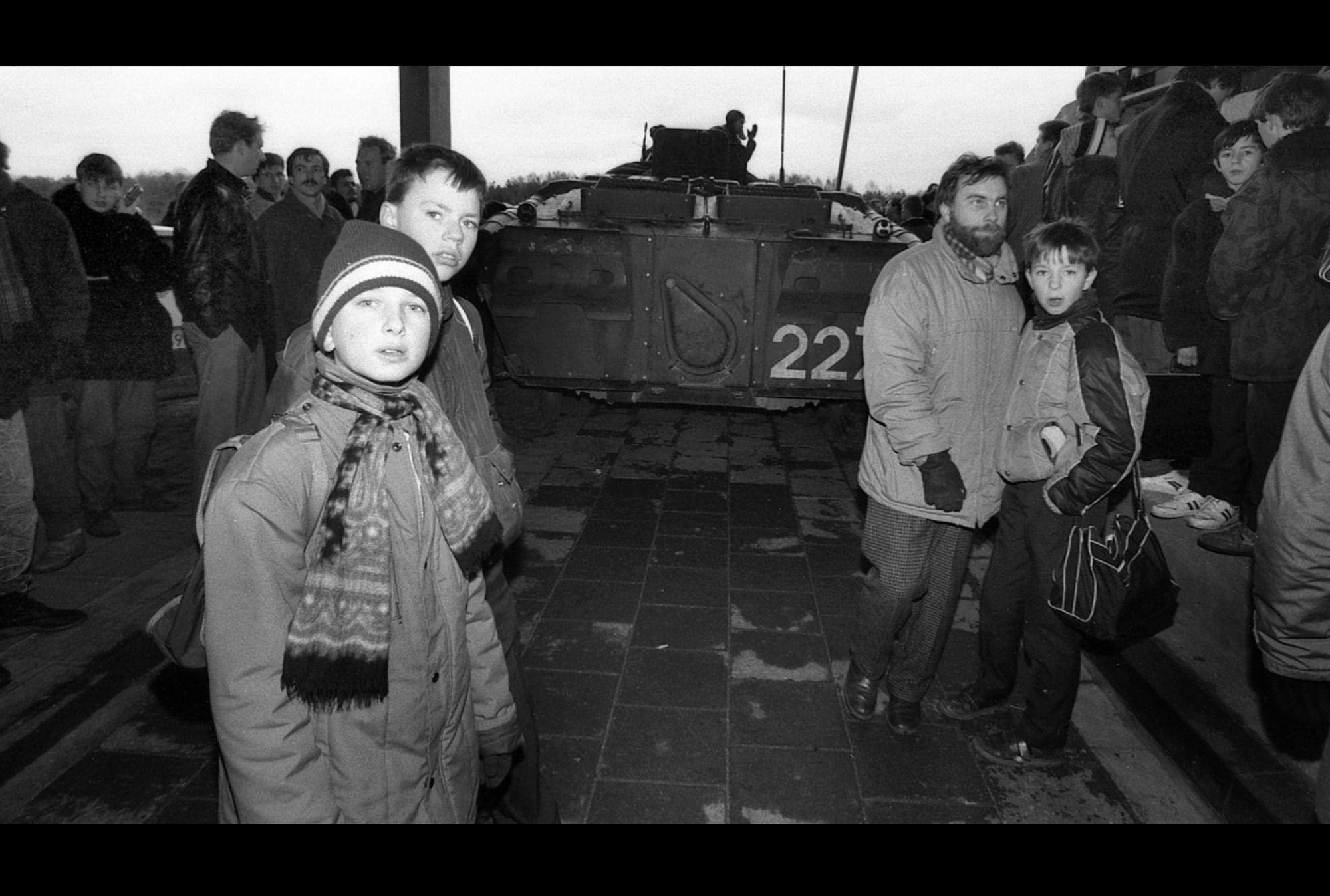
Soldiers and military equipment of the Soviet army in front of the crowd of defenders of Lithuania‘s independence. The Press House, Vilnius, 11 January, 1991. OLKM

Soldiers of the Soviet Army with military equipment in front of the Press House. Vilnius, 11 January, 1991. OLKM



Soldiers of the Soviet Army lined up in front of the Press House. Vilnius, 11 January, 1991. OLKM

Defenders of Lithuania‘s independence in front of Soviet army soldiers. Press House, Vilnius, January, 1991. Photographer Paulius Lileikis

Defenders of Lithuania‘s independence in front of Soviet army soldiers.
Press House, Vilnius, 11 January, 1991. Photographer Česlovas Montvila. LVNA


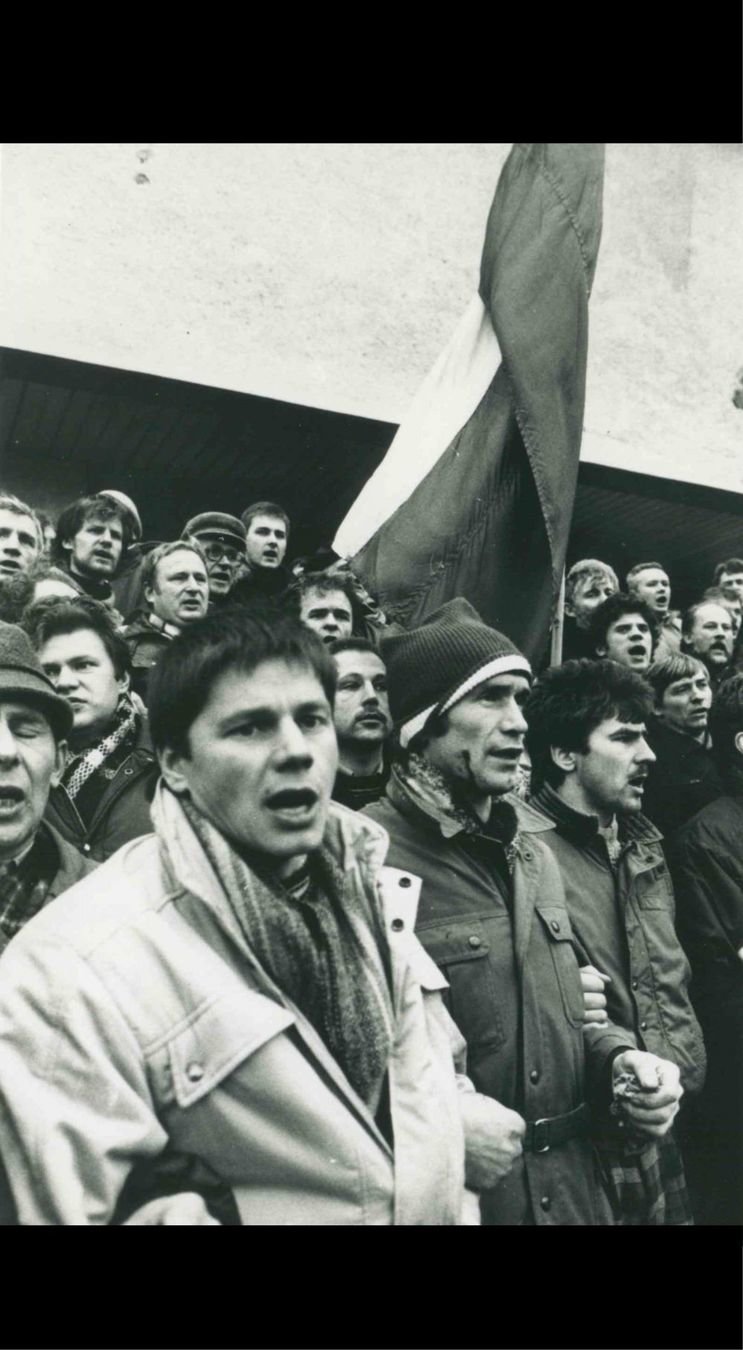
Defenders of Lithuania‘s independence at the Press House. Vilnius, 11 January, 1991. Photographer Marijonas Baranauskas. LVNA
Songs of the defenders of Lithuania‘s independence in front of Soviet army soldiers. Press House, Vilnius, 11 January, 1991.
LRT archives
Defenders of Lithuania‘s independence at the Press House. Vilnius, January. 11, 1991. Photographer Česlovas Montvila. LVNA

Defenders of Lithuania‘s independence at the Press House. Vilnius, 11 January, 1991. Photographer Česlovas Montvila. LVNA



Aggression of Soviet army soldiers against defenders of Lithuania‘s independence. Press House, Vilnius, 11 January, 1991. Photographer M. Kulbis. OLKM

Defenders of Lithuania‘s independence in front of the military equipment of the Soviet army. Press House, Vilnius, 11 January, 1991. Photographer Aleksadras Ostašenkovas. LVNA



Soldiers of the Soviet army with military equipment in front of the Press House. Vilnius, 11 January, 1991.
Photographer Paulius Lileikis
Defenders of Lithuania‘s independence in front of Soviet army soldiers and military equipment. Press House, Vilnius, January, 1991. Photographer Paulius Lileikis



Not afraid... The young man raised a tricolor flag in front of the military equipment of the Soviet army. Vilnius, January, 1991. Photographer Arvydas Reklaitis. LVNA

Choose the part:
At Lithuanian
Radio and
Television
building
Invading the Lithuanian Radio and Television building. Vilnius, 13 January, 1991. Photographer Česlovas Montvila. LVNA


Defenders of Lithuania's independence at the Lithuanian Radio and Television building. Vilnius, 13 January, 1991.
LRT archives
Military equipment of the Soviet army near the Lithuanian radio and television building. Vilnius, 13 January, 1991. Photographer Česlovas Montvila. LVNA



A woman injured from an explosive package during the invasion of Lithuanian radio and television building. Vilnius, 13 January, 1991. Photographer Antanas Bumelis. LVNA
Last words of the narrator Eglė Bučelytė broadcasting live before Soviet Army soldiers occupied Lithuanian radio and television building. Vilnius, 13 January, 1991.
LRT archives
Choose the part:
At Vilnius
TV Tower
Photographer Aleksandras Ostašenkovas. OLKM


Defenders of Lithuania‘s independence at Vilnius TV tower. Vilnius, January, 1991. Photographer Paulius Lileikis
Defenders of Lithuania‘s independence with tricolor flag at Vilnius TV tower. Vilnius, January, 1991. Photographer Paulius Lileikis


Defenders of Lithuania‘s independence are on duty at Vilnius TV tower. Vilnius, January, 1991. Photographer Paulius Lileikis





Vilnius TV tower occupation scheme. January, 1991. Author Karolis Cieminis. LVNA
Aggression of Soviet army soldiers against defenders of Lithuania‘s independence. Vilnius TV tower, Vilnius, 13 January, 1991. Photographer Zenonas Nekrošius




At Vilnius TV tower. Vilnius, 13 January, 1991. Photographer Paulius Lileikis
Slogans of the defenders of Lithuania‘s independence in front of the military equipment of the Soviet army.
Television Tower, Vilnius, 13 January, 1991.
LRT archives



Defender of Lithuania‘s independence with tricolor flag in front of the military equipment of the Soviet army storming the Vilnius TV tower. Vilnius, 13 January, 1991.
Photographer Virgilijus Usinavičius
Defenders of Lithuania‘s independence in front of the military equipment of the Soviet army storming Vilnius TV tower. Vilnius, 13 January, 1991. Photographer Zenonas Nekrošius





Aggression of Soviet army soldiers against defenders of Lithuania‘s independence. Vilnius Television tower, Vilnius, 13 January, 1991. Photographer Zenonas Nekrošius
First aid for the injured at the Vilnius TV tower. Vilnius, January, 1991. Photographer Paulius Lileikis
Victims of aggression by Soviet soldiers during the assault at the Vilnius TV tower. Vilnius, 13 January, 1991. Photographer Virgilijus Usinavičius

Injured defenders of Lithuania‘s independence at Vilnius TV tower. Vilnius, 13 January, 1991. Photographer Alexandras Ostašenkovas. OLKM


First aid for the injured at Vilnius TV tower. Vilnius, January, 1991. Photographer Paulius Lileikis


Aggression of Soviet soldiers against unarmed defenders of Lithuania‘s independence.
Vilnius Television Tower, 13 January, 1991.
LRT archives
Injured defenders of Lithuania‘s independence during the assault at Vilnius TV tower. Vilnius, 13 January, 1991. Photographer Zenonas Nekrošius


Choose the part:
At the
Palace of the
Supreme
Council of the
Republic of
Lithuania
Defenders of Lithuania‘s independence are on duty near the Palace of the Supreme Council of the Republic of Lithuania. Vilnius, January, 1991. OLKM


Defenders of Lithuania‘s independence near the Palace of the Supreme Council of the Republic of Lithuania. Vilnius, January, 1991. Photographer Marijonas Baranauskas
Near the Palace of the Supreme Council of the Republic of Lithuania. Vilnius, January, 1991. Photographer Arvydas Reklaitis. LVNA




Volunteers of the Republic of Lithuania in the Palace of the Council of Ministers. Vilnius, January, 1991. PM
Bonfires at the Palace of the Supreme Council of the Republic of Lithuania. Vilnius, January 1991. Photographer Paulius Lileikis


Sharing food and tea at the Supreme Council of the Republic of Lithuania.
Vilnius, January, 1991.
Photographer Paulius Lileikis


Prayer and song of the defenders of Lithuania‘s independence at the Palace of the Supreme Council of the Republic of Lithuania. Vilnius, January, 1991. Photographer Paulius Lileikis

Holy Mass at the Palace of the Supreme Council of the Republic of Lithuania. Vilnius, 13 January, 1991.
Personal archive of a priest Robertas Grigas
OLKM

Holy Mass at the Palace of the Supreme Council of the Republic of Lithuania. Vilnius, January, 1991. Photographer Paulius Lileikis
Volunteers of the Republic of Lithuania on duty in the Palace of the Supreme Council of the Republic of Lithuania.
Vilnius, January, 1991.
Photographer Paulius Lileikis


Defenders of Lithuania‘s independence listens to the news broadcast on the radio at the Palace of the Supreme Council of the Republic of Lithuania. Vilnius, January, 1991. Photographer Paulius Lileikis

Volunteers of the Republic of Lithuania, who were on duty in the Palace of the Supreme Council of the Republic of Lithuania. Vilnius, 12 January, 1991. Photographer Vilius Jasinevičius

Near the Palace of the Supreme Council of the Republic of Lithuania. Vilnius, January, 1991. Photographer Paulius Lileikis


Defenders of Lithuania‘s independence carry barricade barriers near the Palace of the Supreme Council. Vilnius, 13 January, 1991. Photographer Vilius Jasinevičius


Defenders of Lithuanian independence are building barricades at the Supreme Council building. Vilnius, January, 1991. Operator Zdislavas Voicechovskis.
LCVA
Independence Square in the morning of 13th January. Vilnius, 1991. Photographer Zenonas Nekrošius

Barricades on Gediminas avenue near the Palace of the Supreme Council of the Republic of Lithuania. January, 1991. Photographer Antanas Ališauskas
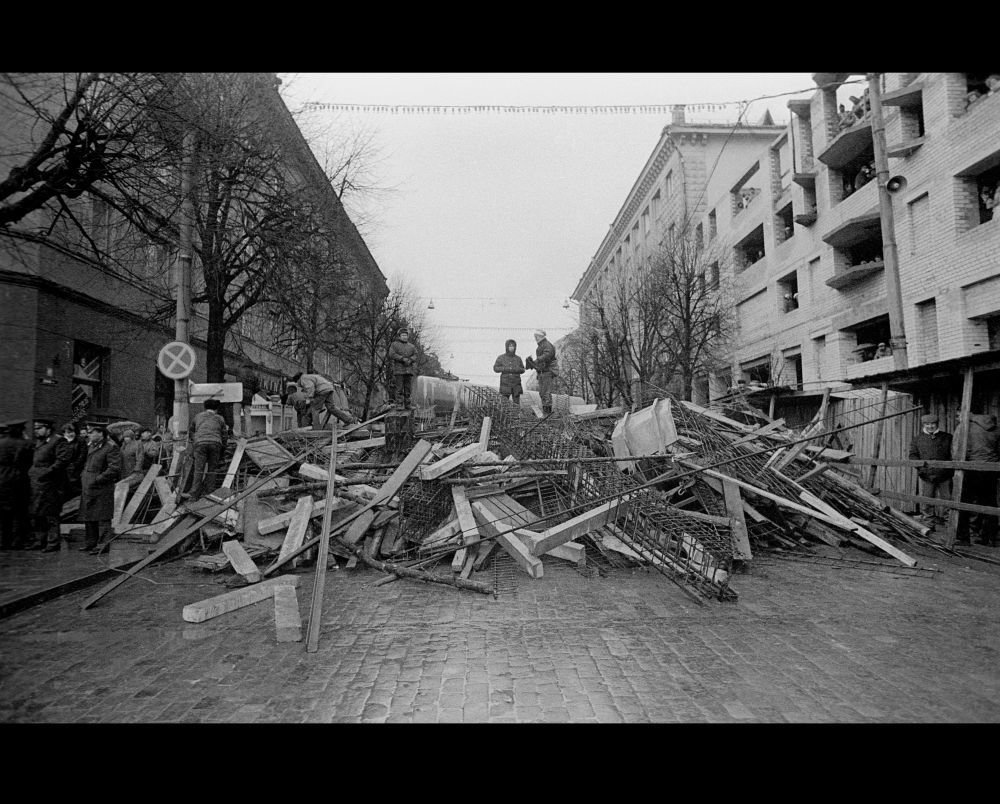
Posters and slogans on barricades at the Palace of the Supreme Council of the Republic of Lithuania condemning the aggression of the Soviet army. Vilnius, January, 1991. Photographer Evaldas Palšaitis. OLKM

On duty at the Palace of the Supreme Council of the Republic of Lithuania. Vilnius, January, 1991. Photographer Zenonas Nekrošius

Defenders of Lithuania‘s independence at the Palace of the Supreme Council of the Republic of Lithuania. Vilnius, 13 January, 1991. Photographer Vilius Jasinevičius

The material used in the exhibition is stored: - in Lithuanian Central State Archives (LCVA) - in the New Archives of the State of Lithuania (LVNA) - Lithuanian National Radio and Television Archive (LRT archive) - the Museum of Occupations and Freedom Fights of the Genocide and Resistance Research Centre of Lithuania (OLKM) - Border Guard Museum (PM) For the design of exhibition were used Gintautas Kavarskas negatives, stored in the Museum of Occupations and Freedom fights (OLKM)
Special thanks to photographers
Paulius Lileikis, Zenonas Nekrošius,
Vilius Jasinevičius, Virgilijus Usinavičius
The exhibition was prepared by employees of the Museum of Occupations and Freedom Fights of the Genocide and Resistance Research Centre of Lithuania:
Aidas Alekna, Gerda Urbonienė, Aistė Tarabildienė,
Milda Ramanauskaitė, Aleksandras Nesvat
Please send feedback, remarks and additional information
by e-mail: muziejus@genocid.lt

The Genocide and Resistance Research Centre of Lithuania


